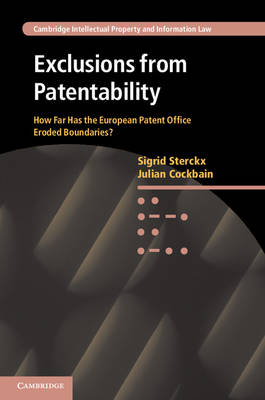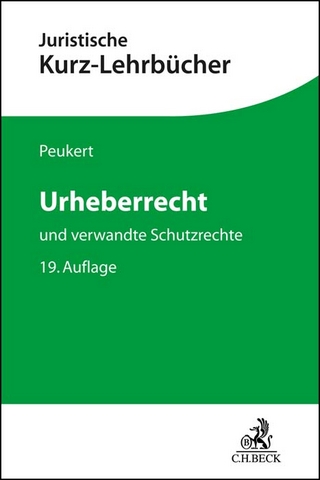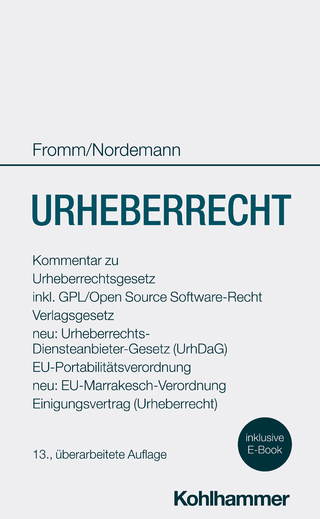
Exclusions from Patentability
How Far Has the European Patent Office Eroded Boundaries?
Seiten
2015
Cambridge University Press (Verlag)
978-1-107-54262-4 (ISBN)
Cambridge University Press (Verlag)
978-1-107-54262-4 (ISBN)
Exclusions from Patentability reviews the history of the adoption of exclusions from patentability under the European Patent Convention since its first conception in 1949 through to its most recent revision. It is of particular interest to patent law practitioners and to academics and students of law and ethics.
Exclusions from Patentability reviews the history of the adoption of exclusions from patentability under the European Patent Convention since its first conception in 1949 through to its most recent revision. The analysis shows how other intellectual property treaties, such as UPOV, the Strasbourg Patent Convention, PCT, the EU Biotech Directive and TRIPS have affected the framing of the exclusions. Particular attention is given to those exclusions considered the most contentious (computer programmes, discoveries, medical treatments, life forms and agriculture) and those decisions which have been most influential in shaping the approaches by which the exclusions have been interpreted. The 'morality' exclusion and the interpretation of the exclusions are discussed critically and suggestions for coherent interpretation are made.
Exclusions from Patentability reviews the history of the adoption of exclusions from patentability under the European Patent Convention since its first conception in 1949 through to its most recent revision. The analysis shows how other intellectual property treaties, such as UPOV, the Strasbourg Patent Convention, PCT, the EU Biotech Directive and TRIPS have affected the framing of the exclusions. Particular attention is given to those exclusions considered the most contentious (computer programmes, discoveries, medical treatments, life forms and agriculture) and those decisions which have been most influential in shaping the approaches by which the exclusions have been interpreted. The 'morality' exclusion and the interpretation of the exclusions are discussed critically and suggestions for coherent interpretation are made.
Sigrid Sterckx is a Professor of Ethics at Ghent University and at the Vrije Universiteit Brussel (VUB), Belgium. Julian Cockbain is a European patent attorney and a British patent attorney with the British and European patent and trade mark attorney firm Dehns.
1. Introduction; 2. The historical development and current scope of the European Patent Convention; 3. Computer programs; 4. Discoveries; 5. Methods of medical treatment and diagnosis; 6. Essentially biological processes for the production of plants and animals; 7. Plant and animal varieties; 8. Morality and 'ordre public'; 9. Towards a coherent interpretation of the exclusions; 10. Conclusion.
| Reihe/Serie | Cambridge Intellectual Property and Information Law |
|---|---|
| Zusatzinfo | Worked examples or Exercises |
| Verlagsort | Cambridge |
| Sprache | englisch |
| Maße | 152 x 228 mm |
| Gewicht | 552 g |
| Themenwelt | Recht / Steuern ► EU / Internationales Recht |
| Recht / Steuern ► Wirtschaftsrecht ► Urheberrecht | |
| Wirtschaft ► Betriebswirtschaft / Management ► Unternehmensführung / Management | |
| ISBN-10 | 1-107-54262-6 / 1107542626 |
| ISBN-13 | 978-1-107-54262-4 / 9781107542624 |
| Zustand | Neuware |
| Haben Sie eine Frage zum Produkt? |
Mehr entdecken
aus dem Bereich
aus dem Bereich
Textausgabe zum deutschen, europäischen und internationalen Patent-, …
Buch | Softcover (2023)
dtv Verlagsgesellschaft
17,90 €
Kommentar zu Urheberrechtsgesetz, Verlagsgesetz, Neu: …
Buch | Hardcover (2024)
Kohlhammer (Verlag)
349,00 €


